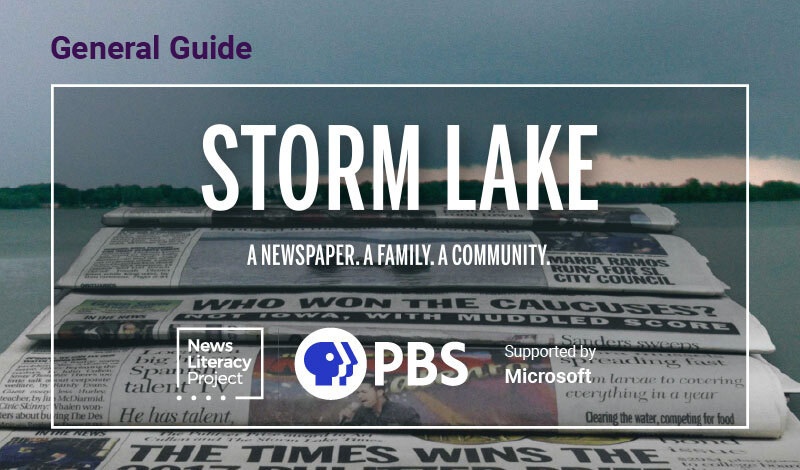
"Storm Lake" discussion guide on the importance of local journalism
This discussion guide serves as a companion for adult learners and community members viewing the PBS documentary Storm Lake.
News Goggles annotations and activities provide news literacy takeaways on timely topics. These resources feature examples of actual news coverage, including full news reports, headlines, breaking news alerts or excerpts.
This video originally appeared in the Dec. 6, 2021, issue of The Sift® newsletter for educators, which explores timely examples of misinformation, addresses journalism and press freedom topics and examines social media trends and issues. Read archives of the newsletter and subscribe here. Stock music in this video was provided by SoundKit from Pond5.
Newsworthiness is a key concept in news literacy. With so many stories competing for attention, journalists must determine which events and issues to cover, and how prominently. This week, we talk to Miguel Otárola of Colorado Public Radio about how he decides which story ideas to pursue in his role covering climate and the environment.
“When you talk about newsworthiness, I feel like you can’t get any more newsworthy right now than climate change,” Otárola said.
Climate change, he added, “impacts everything,” from where and how people live to the jobs they have and how they get their food.
Otárola offers insights for his story on restoring forests after wildfires, which recently aired on the NPR and WBUR show Here & Now.
“We are in a place where a lot of different states in the West are going to have to deal with this,” he said. “What will a healthy forest look like after a wildfire tears it down?”
Otárola also sheds light on how journalists select quotes for news reports and the importance of presenting information in context. Grab your news goggles!
Note: News Goggles will be back Feb. 7. You can find previous News Goggles annotations and activities in this guide, or in NLP’s Resource Library under “Classroom Activities.”
Resources: “Practicing Quality Journalism” (NLP’s Checkology® virtual classroom) and “Quotes in news reports” (NLP’s News Goggles activity with classroom-ready slides).
Dig deeper: Use this viewing guide for the featured News Goggles video as students consider what makes a topic newsworthy and why information should be presented in context.
Have feedback about this resource? Or an idea for a future News Goggles? Please share it with us at [email protected].
This discussion guide serves as a companion for adult learners and community members viewing the PBS documentary Storm Lake.


This week, we talk to Washington Post reporter María Luisa Paúl about her recent story on 7-year-old Tariq, whose


How do journalists see news? Put on a pair of “news goggles” and check out these conversations with professional


In this lesson, students use four key criteria to explore how journalists determine which events to cover.


This week, we talk to Candace Buckner of The Washington Post about her role as a sports columnist. Buckner



